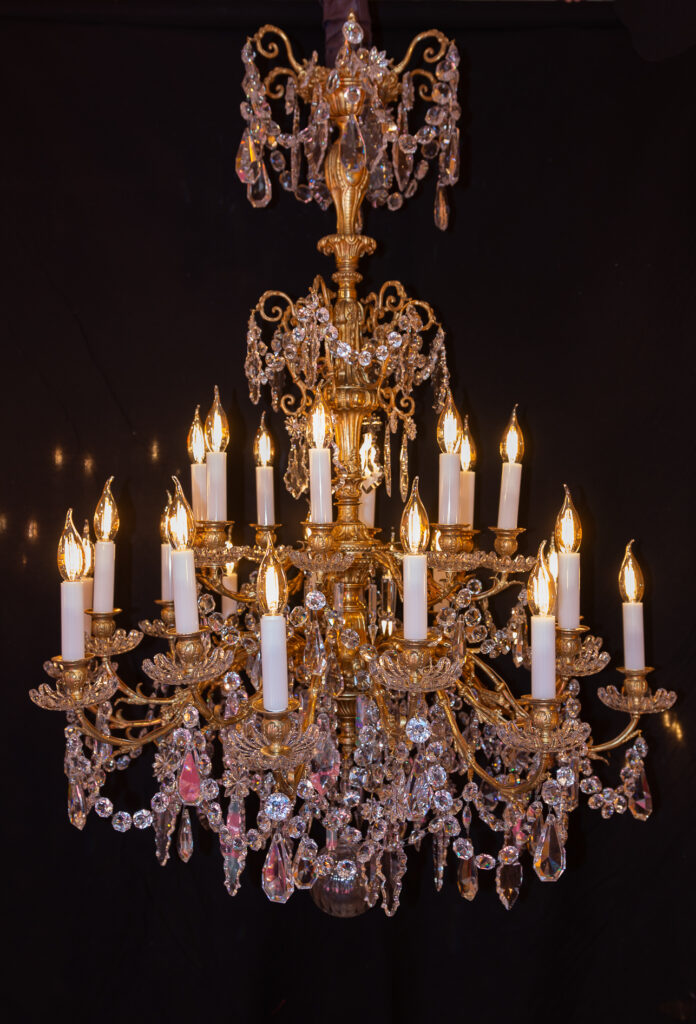Twenty-four-light chandelier in chiseled gilded bronze with Baccarat crystal decoration, circa 1880
An elegant and important chandelier in the Louis XVI style in finely and richly carved bronze in its beautiful period gilding, illuminated by twenty-four arms of light on two levels, decorated with branches, flutes and foliage, as well as the central shaft composed of beautiful elements in finely carved and gilded bronze.
Our chandelier features a rich, high-quality white cut-crystal décor, with numerous octagons, rosettes, stars, mirza, plaquettes and twenty-four basins. The chandelier ends with a superb large cut-crystal ball.
Magnificent 19th-century French chandelier circa 1880, with crystal decoration signed by Cristallerie de Baccarat.
Dimensions : Hauteur 135 cm – Diamètre 100 cm.
Its large diameter (39.37 Inches) makes it ideal for apartments without high ceilings.
In very fine condition, in its beautifully original period gilding, electrified to European standards, and can be upgraded to American standards on request.
Baccarat:
In 1764, French King Louis XV granted Louis-Joseph de Montmorency-Laval, Bishop of Metz, permission to establish a glassworks in the Lorraine village of Baccarat.
In 1824, Ismaël Robinet, a Baccarat glassmaker, invented an air-piston pump that facilitated glassblowing. The following year, Baccarat developed the press-molded technique.
In 1855, Baccarat took part in the first Paris Universal Exhibition, exhibiting two monumental candelabras and a chandelier.
In 1860, on October 29, Baccarat registered its trademark with the Paris Commercial Court: a carafe, a stemmed glass and a beaker inscribed in a circle. Initially printed on a paper label, the stamp was later engraved directly onto the piece.
Baccarat crystal is of the highest quality, containing no less than 31.7% lead, with no defaults and the highest standards. Cristallerie de Baccarat has been passed down through the generations and remains a symbol of French art de vivre.




